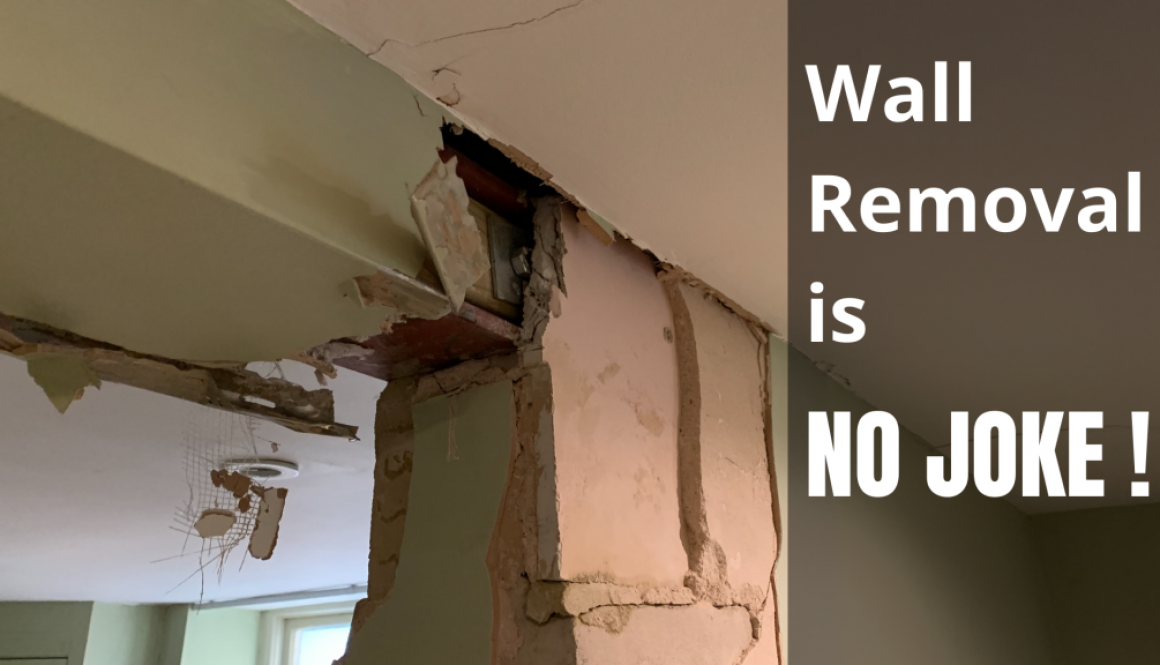WALL REMOVAL: IT’S NO JOKE
How can you carry out a wall removal without checking its structural elements? You can’t. What do you call a structural engineer with x-ray vision? You don’t. They don’t exist. And yet, some clients expect them to see through walls.
Bearing the load
If you’re removing an internal wall, you need assurance that the wall, floor, ceiling or roof above won’t collapse. That’s why you instruct a structural engineer: to check if a wall bears a load or not. However, engineers can only do this if they are able to see what lies beneath.
Some clients believe that a layout plan provides enough information about the structural elements of their property. Others assume that an internal masonry wall is structural just because it is solid. Or, that stud walls or ‘hollow-sounding’ walls don’t provide structural support.
Load matters
Removing a load-bearing wall without installing adequate support is dangerous. Clearly, it’s helpful to understand what a load-bearing wall is.
A ground-floor wall is load bearing if it continues above to form a bedroom wall. In such a scenario, the downstairs wall supports the bricks (the load) that form the wall on the floor above. If you were to remove the wall at the ground floor level, there would be nothing in place to hold the weight of the wall above.
A ground-floor wall that doesn’t continue above could still be load bearing if there are timber joists placed between the top of the wall and the first-floor wall. Internal walls in older houses may also provide support to the roof structure. Don’t be lulled into a false sense of security if you hear a hollow sound when you tap a partition wall in a Victorian property.
I’ve called Laytoe: What next?
Have in mind the eggs and omelette analogy and accept that you can’t remove a wall without breaking plaster. Engineers need to see what lies beneath and above a wall.
If you request a wall inspection from Laytoe, you will save time, money and annoyance by removing two 30 cm x 30 cm patches of decorative cover (such as wallpaper and tiles) and plaster before our engineer arrives. The patches should expose the top of the wall and the ceiling where it meets the wall.
Once this area is uncovered, the presence (or absence) of a joist or beam enables us to determine how to best to proceed with the removal of a wall. Still, that doesn’t stop clients from asking structural engineers to assess walls without exposing them.
It seems strange that one might be reluctant to remove tiles or plaster for fear of an unsightly wall even though the wall is earmarked for removal. Yet all too often we have to inform clients that we will charge for a necessary second visit. This is an extra cost that could have been saved if the client had prepared the wall for inspection as requested.

